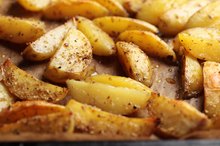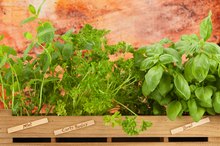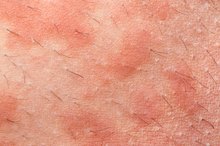What does fact checked mean?
At Healthfully, we strive to deliver objective content that is accurate and up-to-date. Our team periodically reviews articles in order to ensure content quality. The sources cited below consist of evidence from peer-reviewed journals, prominent medical organizations, academic associations, and government data.
- Pubmed Health; Hives; April 2009
- Pubmed Health; Hives; April 2009
- Linus Pauling Institute: Cruciferous Vegetables
The information contained on this site is for informational purposes only, and should not be used as a substitute for the advice of a professional health care provider. Please check with the appropriate physician regarding health questions and concerns. Although we strive to deliver accurate and up-to-date information, no guarantee to that effect is made.
I Have Hives Due to Cruciferous Vegetables
Hives are red welts on your skin that look like a rash. Often itchy, hives can be caused by different triggers, including insect bites, medications, allergies, extreme temperatures and stress. Some foods could also contribute to your skin problem, especially foods with a high salicylate content such as many cruciferous vegetables 2.
Cruciferous Vegetables
Cruciferous vegetables are known for their nutritional value and high antioxidant content 2. However, if you are prone to hives, eating more cruciferous vegetables could worsen your skin problem 2. Cruciferous vegetables include:
- broccoli
- cabbage
- cauliflower
- Brussels sprouts
- kale
- bok choy 2
Many of these vegetables have a high salicylate content.
High Salicylate Cruciferous Vegetables
Nightshade Vegetables & Skin Rash
Learn More
Avoid eating these cruciferous vegetables to lower your intake of salicylate and better manage your hives 2.
Low Salicylate Cruciferous Vegetables
Although bok choy, Brussels sprouts and cabbage also belong to the cruciferous vegetable family, they have a negligible salicylate content and are not likely to contribute to your hives. You can include these vegetables without worrying about worsening your skin condition.
Other High Salicylate Vegetables
Allergy & Itchy Hands and Feet
Learn More
Many other foods contain salicylate and can exacerbate hives. Meeting with a registered dietitian with experience working with people with hives can help you find the foods in your diet, besides cruciferous vegetables, that could also be a problem 2. Apart from cruciferous vegetables, vegetables such as:
- tomatoes
- mushrooms
- olives
- avocado
- bell peppers
- artichoke
- corn
- onion also have a high salicylate content 2
Safe Low Salicylate Vegetables
These vegetables are safe even for people with hives who have a high sensitivity to salicylates.
Related Articles
References
- "RPAH Elimination Diet Handbook"; Allergy Unit, Royal Prince Alfred Hospital; 2011
- Linus Pauling Institute: Cruciferous Vegetables
- Donovan EL, McCord JM, Reuland DJ, et al. Phytochemical activation of Nrf2 protects human coronary artery endothelial cells against an oxidative challenge. Oxid Med Cell Longev 2012, 2012:132931.
- Han SG, Han SS, Toborek M, Hennig B. EGCG protects endothelial cells against PCB 126-induced inflammation through inhibition of AhR and induction of Nrf2-regulated genes. Toxicol Appl Pharmacol 2012, 261:181-188.
- Huang CS, Lin AH, Liu CT, et al. Isothiocyanates protect against oxidized LDL-induced endothelial dysfunction by upregulating Nrf2-dependent antioxidation and suppressing NFkappaB activation. Mol Nutr Food Res 2013, 57:1918-1930.
- Zakkar M, Van der Heiden K, Luong le A, et al. Activation of Nrf2 in endothelial cells protects arteries from exhibiting a proinflammatory state. Arterioscler Thromb Vasc Biol 2009, 29:1851-1857.
- Zhang X, Shu XO, Xiang YB, et al. Cruciferous vegetable consumption is associated with a reduced risk of total and cardiovascular disease mortality. Am J Clin Nutr 2011, 94:240-246.
Writer Bio
Aglaee Jacob is a registered dietitian. She has experience working with people who have diabetes, cardiovascular disease, hypertension and obesity issues. Jacob obtained a bachelor of science and a master of science, both in nutrition, from Laval University in Quebec City, Canada.








